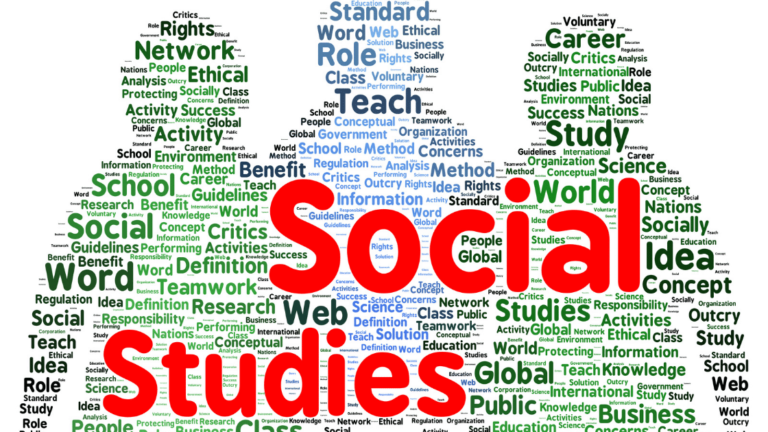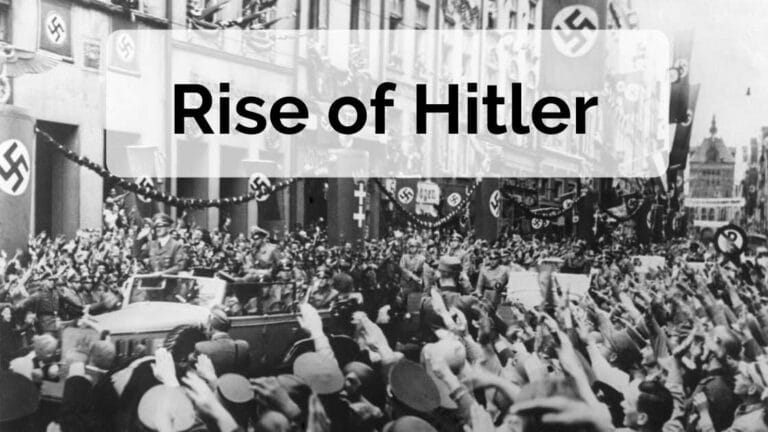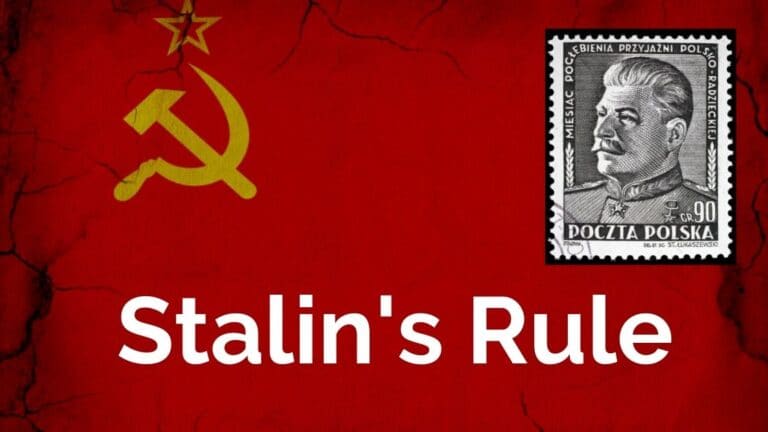Understanding Social Studies Sources
Understanding sources is a crucial part of understanding Social Studies. What are sources? Social Studies sources come in many different forms; they can be the spoken word, a written document or an image.
Whatever form they take, sources tell us more information about the topic. They can be a speech by a politician, an essay by an academic or a poster by an illustrator. Hence, it is essential to understand their characteristics and limitations, so you know how to interpret them and answer questions based on them.
In this article, I will look at Social Studies sources and some of the terms that will help you get up to speed with them!
Before I start, let me point out where students can encounter them. Teachers use Social Studies sources for two reasons: learning authentic perspectives of an issue and for assessment.
The first reason is why the Social Studies textbook includes so many sources. They help to show different opinions on the topic as they are from a variety of people. Hence, we can learn how people of different backgrounds and perspectives view an issue.
The second reason is precisely the reason why students need to understand how to interpret sources. After all, no teacher can guide you through the thought processes of analysing a source during examinations.
What happens in a Social Studies assessment? The paper will have a case study with two to six sources. Students will analyse the sources to understand the case study and answer questions on them.
Analysing Social Studies Sources: What is the Provenance?
The basics: what is the provenance of a Social Studies source? A provenance gives us more information about it, such as its creator and background; it tells us where and how the author of the source created it. You can find the provenance at the top of the source.
From the provenance, we can deduce three things: Origin, Context and Agenda.
Analysing Social Studies Sources: What is the Origin?
What is the Origin of the source? It tells us where the Social Studies source comes from.
Who wrote or created it? Was it from a speech by a famous political leader? Or it was simply the writings of an ordinary person? A prominent political leader will always think about the impact of his words on his audience, while an average person might believe that no one will read his musings.
Consider their race, gender, religion, nationality, or heritage. Would you believe a male Singapore citizen when he talks about National Service in Singapore? Would a religious leader accept attacks on his faith?
What are the author’s intentions with this text? Did they write it to persuade, incite, enlighten, explain, or deceive the reader somehow and what made them choose to present this information over others?
In addition, was the author paid to say this? Or was he coerced, or this was something he truly believed in? Why was it written, and for whom did he intend on reaching out to through its contents?
These are all essential questions one needs to ponder as the answers will determine how one interprets a Social Studies source.
Analysing Social Studies Sources: What is the Context?
After thinking about the Origin, let us put the Social Studies source in its Context.
Specifically, students need to analyse the source with reference to what was happening. Was the source created in response to a specific event or just in general? Students have to understand that different countries and periods have different perspectives.
Did the author create the source at the time of the event (primary), or was it created years later by someone reflecting or researching that period (secondary)?
What kind of medium was the source? Was the source circulated in some obscure newspaper, or was it made during a crucial debate viewed by the public?
Again, to understand a Social Studies source, one must consider these questions.
Analysing Social Studies Sources: What is the Agenda?
Finally, think about the intent of their publication.
What did the author want to achieve by publishing the document? Was it made to persuade someone else about a particular opinion on an issue, for example? Or was it made as a record of the event?
Students also need to ask themselves, who is the target audience of the source? Was the author addressing the people who oppose his views or preaching to the choir? What is the point of view of the source? Is the source biased or objective?
Most importantly, students need to reflect on what the author wanted the target audience to do? Did he want them to vote for something or support his point of view?
At this point, you may need to analyse the content of the Social Studies Source to understand the agenda.
Analysing Social Studies Sources: What is the Content?
The content of the Social Studies source is the most challenging part to analyse. Not only do you have to understand the explicit information given, but you also need to understand the implicit information. And you have to do this while looking at two diverse medium: prose and images.
Let me explain what is explicit information. Explicit information is what the creator tells the audience directly. The author stated this knowledge as clearly as possible so that it is almost impossible for the reader to misinterpret it.
What is implicit information? Implicit information is when the author gives hints and clues to what he is thinking. He does not directly tell the reader his message, but the reader will be able to ‘read between the lines to understand the author.
Let us go through the basics of understanding text-based and image-based Social Studies sources.
Understanding Text Sources
Let us analyse Source A:
Source A
A comment by a foreign worker who was invited to a local’s home for the ‘Come Makan With Me’ self-volunteering initiative to connect with migrant workers on Facebook, published in 2018
I have never expected a Singaporean family to invite me to dinner all the years working in Singapore. I knew I had to keep my distance, lest I ruffled feathers. But now, I was curious to see how the locals live. The visit was my chance to experience their life up close. I am very touched by how warm and welcoming the family was and how the hosts’ children were not shy around me. I enjoyed the dinner where we shared everyday stories over delicious food. I will share with my friends back home the good memories I had with this family.
When students see a Social Studies source like the one above, they should read through the information and highlight the keywords. They may even try to summarise the paragraph.
They should think about the overall theme of the source. Is the author positive, negative or objective? Are there assumptions the author made?
After asking the above questions, students will realise that the source is about a Singapore family inviting a foreign worker to dine with them and the experiences of the foreign worker.
Overall, this foreign worker enjoyed himself when he visited the Singaporean family. He was very clear about this. However, even though he did not say it, he hinted that his initial impression of Singaporeans was that they were not friendly towards foreign workers.
While there are complex text sources, students should be capable of analysing most of them. More problematic are visual or image sources. Let us turn out attention to sources with images.
Understanding Visual Sources
Visual sources can be posters, drawings, infographics and cartoons. While most of them have some text, the images contain the main message.
Source B
A cartoon published on Facebook on the petrol price hike in Singapore in February 2021.
When students try to interpret image-based Social Studies sources, they should ask these questions. What is the image? If it is the picture of people, who are they, and what are they doing? If it is the picture of objects or a scene, what are they about?
Is there a caption or a title? Did the artist label any objects? These explanations from the artist are beneficial.
In the source, the cartoonist has drawn the fuel pump to look like a revolver. It still pumps out petrol, we can see from the drop of liquid. But the handle is a handgun handle. The reader can interpret these details with ease.
What is the cartoonist trying to imply? The cartoonist feels the price hike is unfair. You can infer the cartoonist’s perspective as he drew the petrol pump like a pistol. It symbolises the government was holding a gun and ‘robbing’ Singaporeans. Hence, the cartoonist disagrees with the government’s increase in petrol prices.
I hope you can see that inferring the message or understanding the author’s thoughts requires critical thinking. Most students have no problems understanding the images but cannot deduce the author’s point or intention. Let me show you some tips students can try to understand image-based sources better.
Tips for Visual Sources
Let us look at some of the standard techniques used by artists in drawings or cartoons used as Social Studies Sources:
1. Symbolism
One of the most popular technique is symbolism. Artists like to use symbols to represent ideas and concepts. Students should identify these symbols and use them to help understand what the artist is trying to say.
Some common symbols include the dove, which represents peace. Hearts could mean love, and weapons could mean war or aggressive behaviours. For students, think of emojis. Some of them will help students to understand the author’s intention.
The picture source, Source B (above), is a good example. By drawing the pump handle like a gun, the author shows how the government has more power than ordinary citizens in the fuel hike decision.
2. Analogy
An analogy is a comparison between two, unlike things or events that share some characteristics. The cartoonist hopes to help their readers see the situation from a different perspective by comparing it to a familiar one.
Think about what two situations does the cartoon compare. If you can understand the familiar analogy, then understand the more complex situation would be easier. To understand this situation, let us again look at another cartoon, Source C.
Source C
A cartoon published on Facebook on Phase 2 (Heightened Alert) implemented by the Singapore government as a result of the rise in Covid 19 cases.
In May 2021, Singapore tightened Covid measures and moved into Phase 2 Heightened Alert. The cartoonist used the simple game of Snakes and Ladders as an analogy to signify that we have ‘moved backwards’ as the person landed on a square with a snake.
He used this analogy to show this setback. He is also implying that Singapore can always slip back into a worse situation, just like in a game of Snakes and Ladders.
3. Exaggeration
Sometimes artists like to exaggerate the characteristics of people or objects to emphasise a point. Look out for these exaggerations to figure out what the cartoonist is trying to stress.
For example, the artist might be trying to emphasise how something will drag the entire situation. For example, to represent how the Covid-19 pandemic has slowed the world economy, he can draw a gigantic iron ball as big as the earth chained to a globe.
There is no iron ball as big as the earth. Thus, readers will recognise the author wanting to stress the burden of Covid-19.
4. Irony
Cartoonists also use irony to deliver their message. Irony is when the reader expects a particular resolution based on the picture, but the opposite happens.
For instance, the cartoonist draws a waiter serving massive plate with an enormous cover on it. You expect a lot of food under the cover. However, when the waiter uncovers it, the dish is empty.
The artist uses this drawing to emphasise significant assurances, probably by an important politician, but he did not deliver on his promise. Thus, the artist is stressing the utter failure of the pledge.
Conclusion
Let me attempt to summarise the entire article briefly. Understanding Social Studies sources require us to consider the Origin (who is the author?), the Context (where and when was this source made?) and the Agenda (Why was the source written?).
To understand the content, we must understand the direct message of the source. In addition, we also need to detect the author’s attitude and implied meaning. Visual sources are more complicated, and we need to understand some of the standard tools artists use.
Understanding Social Studies sources is only half of the battle. We need to understand how to answer the questions. For more help on this, you can find another article I wrote here.

Critical Thought English & Humanities is your best resource for English, English Literature, Social Studies, Geography and History.
My experience, proven methodology and unique blend of technology will help your child ace their exams.
If you have any questions, please contact us!









